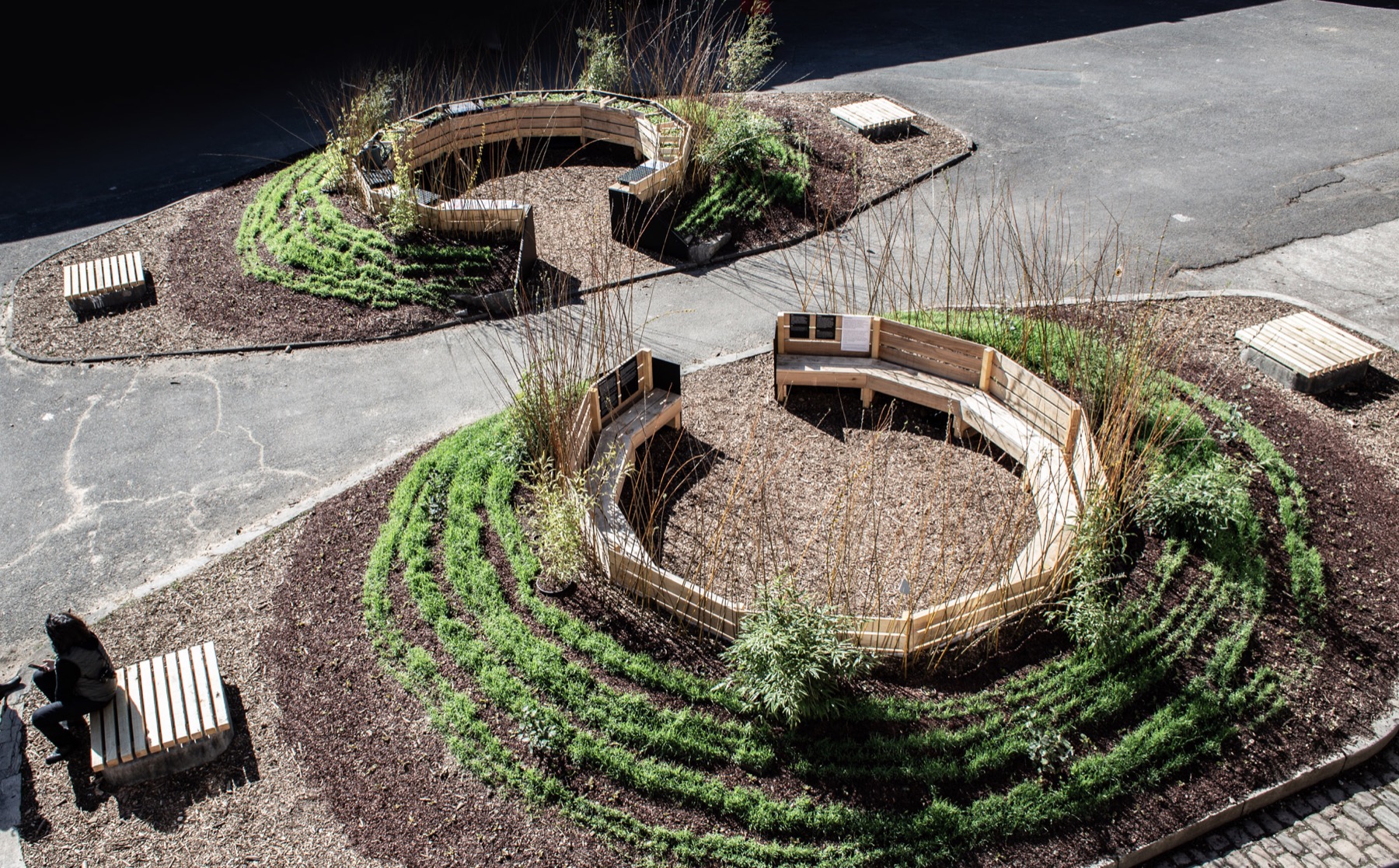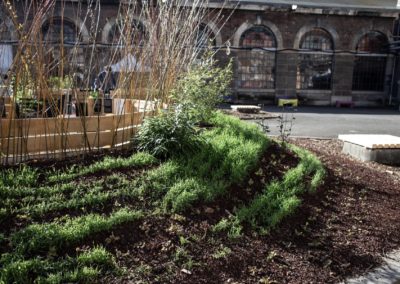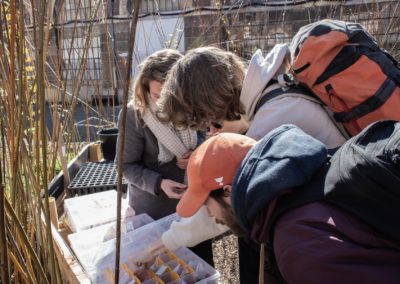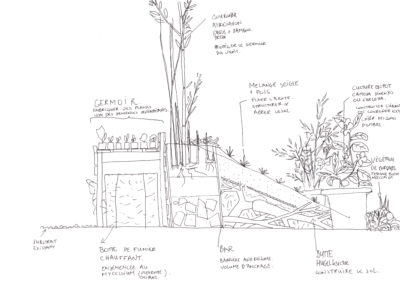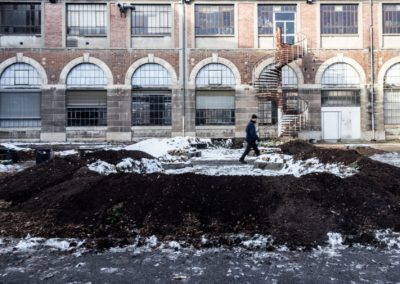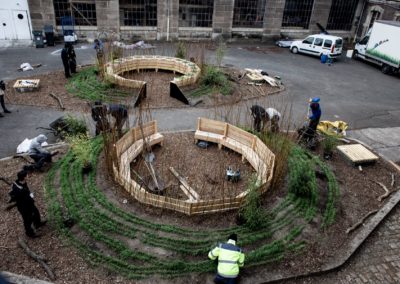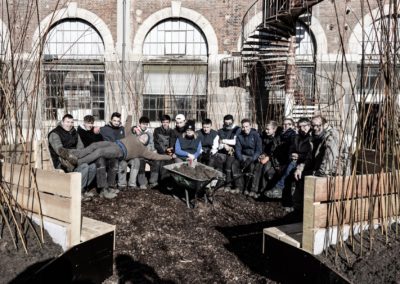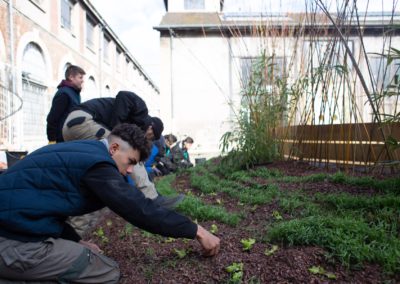Image animée : fertilink, J. Chalus tous droits réservés.
Terre commune
Terre commune s’inscrit dans une démarche de colonisation et de reprise du sol artificialisé de la manufacture d’arme de Saint-Etienne. Avec les
questions que soulèvent cette (Re)-mise en terre : pollution, imperméabilité, circulation des espèces végétales…
Terre commune est un Jardin-germoir dans lequel les graines sont issues d’une collecte organisée auprès des habitants de saint-Étienne en amont de l’événement. Nous invitons les visiteurs de la biennale à apporter leur contribution en leur proposant de participer au semis. Quand les plants seront prêts, ils seront plantés dans le jardin ainsi créé. Leur répartition en quantité et en type feront de cet espace une sorte d’info-graphie vivante d’un terroir urbain.
Construite suivant le procédé de huegelkultur, la butte mise en place autour du germoir permet de fabriquer un sol équilibré. La mise en culture d’un mélange de céréales et de féveroles (pois fourragers) aura pour fonction de fixer l’azote et structurer le sol en vue de son utilisation future notamment en potager.
Ancré dans les usages du site, ce jardin se propose d’interagir avec ses usagers (scolaires, habitants,visiteurs…). Conçu et réalisé avec les élèves du lycée horticole de Villard, l’appui de la ferme en chantier, et du site de production de la ville de Saint-Etienne, Terre commune s’inscrit dans une dynamique collective qui propose de prendre terre sur ce site. Plus qu’une forme finie, il s’agit d’un processus dont l’événement biennale est un point de départ.
Lisa White, curator of last Saint-Etienne Biennale asked us to design a garden in the main courtyard of the former weapon manufacture hosting the event.
Question is, according to the event theme, how to design this place as a common ground ? What makes a garden something we can share ? Earth is something we share already. This narrow living pellicula is home for us : the earthlings, humans & non-humans. Terre commune is designed as an earth capsule landing on manufacture site to colonise & spread over its artificialised soil, involving local peoples & visitors to do so.
Terre commune integrates a germinator. The seeds have been collected from people of the area before the event. During the exhibition, we invite biennale visitors to participate by planting the seeds. When plants are ready, they are planted in the cultural bed. Their repartition in quantities & qualities shows something like a living infography of an urban «terroir».
Terre commune is build over the hugelkultur principle. The cultural bed is made using local discarded materials depending on availibility & opportunity :
– tree’s branches & trunks + crushed materials from the tempest of late october.
– christmas tree’s that people throw in the begining of january
– local earth, for a third of the volume
– cocoa’s nut shells coming from a local chocolate factory.
A crown made of differrents varieties of willows is planted on the top of the bed to structurate & prevents soils from erosion. This trees by loosing their leaves participate to the humus making process. In the same principle, we have seeded a mixture of rye & broad bean,in order to fix azote and aerate soil so it can be used to grow vegetables.
This project has been conceived & build with the pupils of lycée horticole Montravel (school for gardeners), la ferme en chantier (urban farm) &
«cadre de vie» dept. of ville de Saint-Etienne. The process ought to involve them in a new way to consider their job, which is not only about planting greeneries but about urban soil caring. They brought their knowledges & skills at different steps of the process
Expositions/exhibitions.
2019 – Biennale du design de Saint-Etienne.
